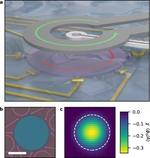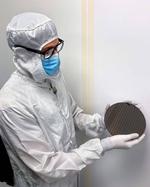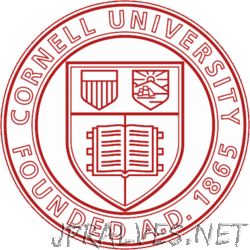Other

“Window glass, at the microscopic level, shows a strange mix of properties. Like a liquid, its atoms are disordered, but like a solid, its atom are rigid, so a force applied to one atom causes all of them to move …

“The Breakthrough Listen Investigation for Periodic Spectral Signals (BLIPSS), led by Akshay Suresh, Cornell doctoral student in the field of astronomy, is pioneering a search for periodic signals emanating from the core of our galaxy, the Milky Way. The research …

“Using state-of-the-art magnetic imaging, a Cornell-led collaboration has for the first time characterized a key property of the superconducting state of a class of atomically thin materials that are too difficult to measure due to their minuscule size. The group …

“Cornell researchers have developed an optical neural network (ONN) that can filter relevant information from a scene before the visual image is detected by a camera, a method that may make it possible to build faster, smaller and more energy-efficient …
“A model system created by stacking a pair of monolayer semiconductors is giving physicists a simpler way to study confounding quantum behavior, from heavy fermions to exotic quantum phase transitions. The group’s paper, “Gate-Tunable Heavy Fermions in a Moiré …

“A chemistry collaboration led to a creative way to put carbon dioxide to good – and even healthy – use: by incorporating it, via electrosynthesis, into a series of organic molecules that are vital to pharmaceutical development. In the process, the team …

“A Cornell team has created an interface that allows users to handwrite and sketch within computer code – a challenge to conventional coding, which typically relies on typing. The pen-based interface, called Notate, lets users of computational, digital notebooks – such as …

“A collaborative effort has installed electronic “brains” on solar-powered robots that are 100 to 250 micrometers in size – smaller than an ant’s head – so that they can walk autonomously without being externally controlled. While Cornell researchers and others have …

“An autonomous vehicle is able to navigate city streets and other less-busy environments by recognizing pedestrians, other vehicles and potential obstacles through artificial intelligence. This is achieved with the help of artificial neural networks, which are trained to “see” the …

“Holding the right material at the right angle, Cornell researchers have discovered a strategy to switch the magnetization in thin layers of a ferromagnet – a technique that could eventually lead to the development of more energy-efficient magnetic memory devices. The …

